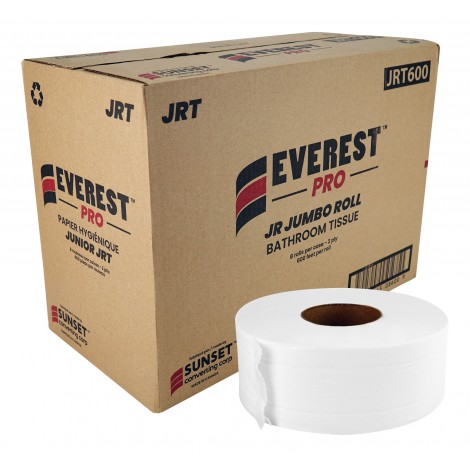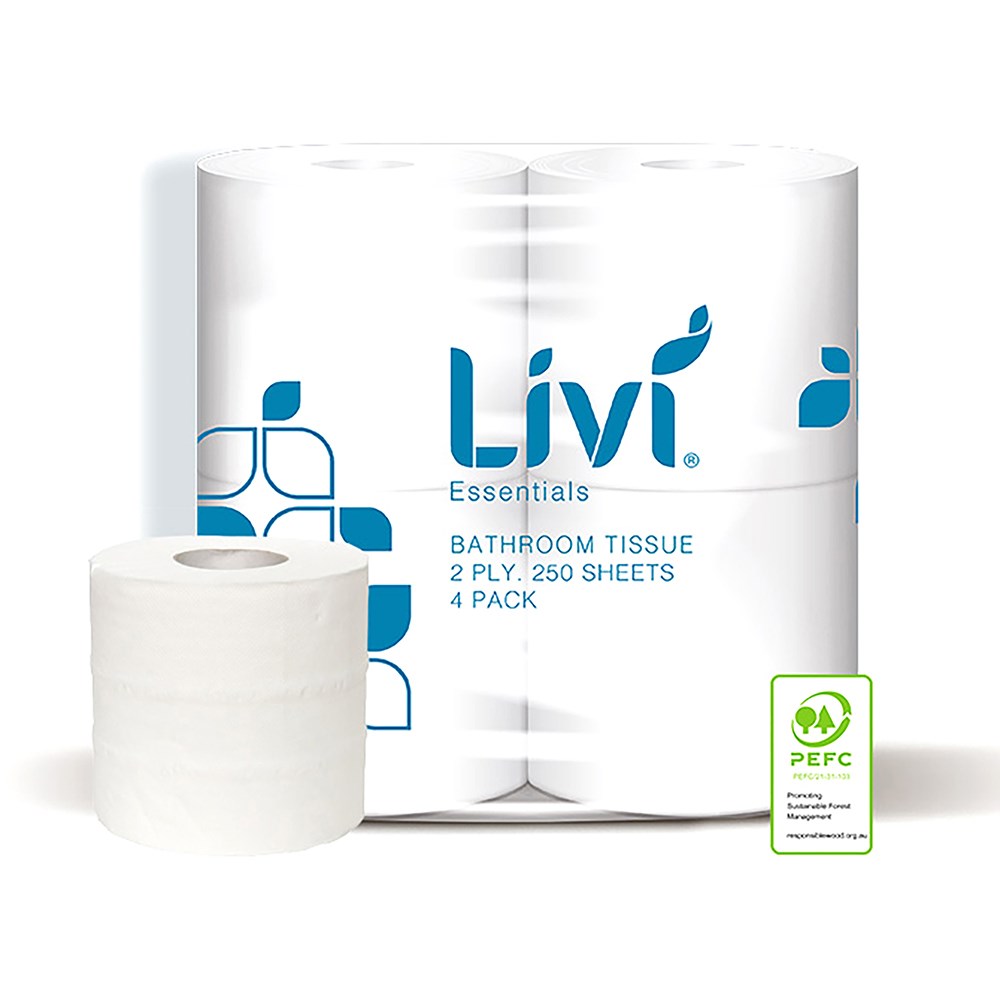From the early days of civilization, humans have sought ways to clean themselves after using the toilet. The earliest methods involved using leaves, stones, or other natural materials. Over time, more sophisticated methods were developed, including the use of cloth rags and water. In the 19th century, the invention of paper made it possible to produce toilet paper on a mass scale. The first commercially produced toilet paper was introduced in 1857 by Joseph C. Gayetty of New York City. Gayetty’s toilet paper was made from recycled newspaper and was sold in flat sheets. In 1879, Scott Paper Company introduced the first roll toilet paper. This innovation made it easier to use toilet paper and helped to popularize its use. By the early 20th century, toilet paper had become a common household item. In the 1930s, 2-ply toilet paper was introduced. This type of toilet paper is made from two layers of paper, which makes it more absorbent and durable.
Understanding the Differences: 1 Ply vs. 2 Ply toilet tissue

1. What is 1 Ply Toilet Tissue?
1-ply toilet tissue is made from a single layer of paper, making it thinner and less absorbent compared to 2-ply toilet tissue. It is often used in public restrooms and commercial settings due to its cost-effectiveness.
2. What is 2 ply toilet tissue?
2-ply toilet tissue consists of two layers of paper bonded together, providing enhanced strength, softness, and absorbency. It is commonly used in residential bathrooms for its superior quality and comfort.
3. Comparison:
| Features | 1 Ply Toilet Tissue | 2 Ply Toilet Tissue |
|---|---|---|
| Number of Layers | Single layer | Two layers |
| Thickness | Thinner | Thicker |
| Absorbency | Less absorbent | More absorbent |
| Strength | Weaker | Stronger |
The Benefits of Using 2 Ply Toilet Tissue: Comfort and Quality

1. Softness:
2-ply toilet tissue offers a luxurious softness that provides a gentle and comfortable cleaning experience. The two layers of paper create a plush feel that is gentle on the skin, reducing irritation and discomfort.
2. Absorbency:
The dual-layer design of 2-ply toilet tissue enhances its absorbency, effectively capturing moisture and ensuring a thorough cleaning process. This superior absorbency results in fewer sheets being used per use, making it more cost-effective in the long run.
3. Strength:
Due to the reinforced structure of two bonded layers, 2-ply toilet tissue is stronger and more durable than 1-ply options. This added strength minimizes tearing and ensures a reliable cleaning experience without any compromise on quality.
toilet tissue 2 ply: Unlocking the Secrets of Softness

1. Material Selection:
The softness of 2-ply toilet tissue is influenced by the quality of the materials used in its production. Premium toilet tissues may incorporate higher-grade wood pulp, bamboo, or other fibers known for their soft texture, resulting in a luxurious feel.
2. Fiber Alignment:
Manufacturers carefully align the fibers of the two layers in 2-ply toilet tissue to enhance its softness. By optimizing the fiber orientation, the tissue achieves a smoother surface that feels gentle against the skin, ensuring a comfortable wiping experience.
3. Embossing Techniques:
Some 2-ply toilet tissues feature embossed patterns or textures on the surface of the paper, further enhancing its softness. These embossing techniques create air pockets between the layers, adding a cushioning effect that boosts comfort and overall tactile experience.
How to Choose the Perfect 2 Ply Toilet Tissue for Your Needs
When selecting 2-ply toilet tissue for your home or business, consider the following factors to ensure optimal comfort and performance:
- Softness: Look for toilet tissue with premium materials and a velvety texture for a luxurious feel.
- Strength: Choose a 2-ply option with excellent durability to prevent tearing during use.
- Absorbency: Opt for a highly absorbent toilet tissue to ensure effective moisture capture and a thorough cleaning process.
- Sustainability: Select eco-friendly options made from recycled materials or sustainable sources to reduce environmental impact.
- Embossing: Consider toilet tissue with embossed patterns for added softness and a more pleasant tactile experience.
The Environmental Impact of Toilet Tissue 2 Ply
Despite its undeniable benefits in terms of comfort and quality, 2-ply toilet tissue raises concerns about its environmental impact due to increased resource consumption and waste generation. To address these issues, manufacturers are increasingly focusing on sustainability initiatives to reduce the ecological footprint of toilet tissue production.
Key environmental considerations related to 2-ply toilet tissue include:
- Resource Management: Sustainable forestry practices and responsible sourcing of raw materials (such as bamboo or recycled paper) help minimize deforestation and promote biodiversity conservation.
- Production Efficiency: Energy-efficient manufacturing processes, water conservation measures, and waste reduction strategies contribute to lower environmental impact and operational sustainability.
- Packaging: Eco-friendly packaging materials, reduced packaging waste, and recyclable packaging solutions support efforts to minimize the carbon footprint of toilet tissue products.
- Certifications: Look for certifications such as the Forest Stewardship Council (FSC) or EcoLogo to ensure that the 2-ply toilet tissue you choose meets recognized environmental standards and demonstrates a commitment to sustainability.
Toilet Tissue 2 Ply: From Production to Your Bathroom
The manufacturing process of 2-ply toilet tissue involves several key steps, from raw material preparation to the final product packaging. Here is an overview of how 2-ply toilet tissue is produced:
1. Raw Material Preparation:
Wood pulp, recycled paper, or bamboo fibers are processed and refined to create the base material for the toilet tissue. These raw materials undergo pulping, bleaching, and refining to achieve the desired quality and consistency.
2. Layer Formation:
The paper pulp is mixed with water and chemicals to create a slurry, which is then divided into two separate streams for the formation of the two layers. Each layer is individually pressed and dried to form thin, continuous sheets of paper.
3. Bonding Process:
The two layers of paper are combined and bonded together using adhesive or pressure bonding techniques. This bonding process ensures that the layers remain firmly attached to each other throughout the manufacturing process and during use.
4. Cutting and Packaging:
Once the bonded layers are formed, the paper is cut into individual sheet sizes or wound onto rolls for packaging. The finished 2-ply toilet tissue rolls are then packaged, sealed, and prepared for distribution to retailers and consumers.
Latest Trends in Toilet Tissue 2 Ply: Innovation and Sustainability
As consumer preferences evolve and environmental awareness grows, the toilet tissue industry is witnessing several trends focused on innovation and sustainability. Key trends shaping the future of 2-ply toilet tissue include:
- Bamboo Toilet Tissue: The use of bamboo fibers as a sustainable alternative to traditional wood pulp is gaining popularity due to bamboo’s rapid growth and minimal environmental impact.
- Recycled Content: Manufacturers are incorporating higher percentages of post-consumer recycled content in 2-ply toilet tissue to reduce waste and promote circular economy principles.
- Flushable Wipes: Flushable wipes are emerging as a convenient and hygienic alternative to traditional toilet tissue, offering a moist cleansing experience.
- Biodegradable Options: Biodegradable toilet tissue varieties that break down easily in septic systems and wastewater treatment plants are becoming more prevalent, addressing concerns about clogging and environmental pollution.
- Eco-Friendly Packaging: Sustainable packaging solutions such as compostable wraps, paper-based packaging, and plastic-free designs are becoming standard practices to reduce plastic waste and promote eco-conscious consumer choices.
Choosing Toilet Tissue 2 Ply: A Step-by-Step Guide
To simplify the process of selecting the perfect 2-ply toilet tissue for your needs, follow these steps:
- Identify Your Preferences: Determine your priorities regarding softness, strength, absorbency, and sustainability features.
- Research Brands: Explore different brands offering 2-ply toilet tissue and compare their product specifications, materials, and eco-friendly initiatives.
- Read Reviews: Check customer reviews and ratings to gain insights into the performance, comfort, and quality of various 2-ply toilet tissue options.
- Consider Eco-Friendliness: Look for certifications, such as FSC or EcoLogo, to ensure that the toilet tissue meets sustainability standards and aligns with your environmental values.
- Trial Purchase: Buy small quantities of different 2-ply toilet tissue brands to test their softness, strength, and overall performance before committing to larger packages.
Toilet Tissue 2 Ply: Frequently Asked Questions and Answers
1. Is 2-ply toilet tissue better than 1-ply?
Yes, 2-ply toilet tissue is generally considered superior to 1-ply due to its enhanced softness, strength, and absorbency, providing a more comfortable and effective cleaning experience.
2. Are there eco-friendly options for 2-ply toilet tissue?
Yes, many brands offer eco-friendly 2-ply toilet tissue made from recycled materials or sustainable sources, along with biodegradable and compostable options to reduce environmental impact.
3. Can I flush 2-ply toilet tissue down the toilet?
Yes, 2-ply toilet tissue is designed to be safely flushed down toilets and is compatible with most septic systems and wastewater treatment processes, unlike non-flushable wipes or paper products.
Conclusion
In conclusion, 2-ply toilet tissue offers a winning combination of comfort, quality, and sustainability, making it a popular choice for residential and commercial use. By understanding the differences between 1-ply and 2-ply toilet tissue, exploring the benefits of softness and absorbency, and considering environmental factors, consumers can make informed decisions when choosing the perfect 2-ply option for their needs. With ongoing innovations in production techniques, materials, and packaging, the future of toilet tissue 2 ply promises even greater advancements in comfort, performance, and eco-conscious solutions.
Toilet tissue production involves a series of steps that contribute to the quality, sustainability, and environmental impact of the final product. Key considerations in the production process include resource management, production efficiency, packaging, and certifications to ensure responsible practices and minimize the ecological footprint of 2-ply toilet tissue.
Resource management is crucial in toilet tissue production to ensure the responsible sourcing of raw materials such as wood pulp, recycled paper, or bamboo fibers. Sustainable forestry practices help minimize deforestation, promote biodiversity conservation, and support the long-term availability of essential resources. By choosing suppliers that adhere to sustainable sourcing practices, manufacturers can contribute to environmental preservation and ecosystem health.
Production efficiency plays a significant role in reducing the environmental impact of toilet tissue manufacturing. Energy-efficient processes, water conservation measures, and waste reduction strategies help lower carbon emissions, decrease water usage, and minimize waste generation during production. Implementing innovative technologies and best practices in manufacturing operations can enhance efficiency, reduce resource consumption, and improve overall sustainability performance.
Packaging also plays a critical role in the environmental impact of toilet tissue products. Eco-friendly packaging materials, reduced packaging waste, and recyclable packaging solutions help minimize the carbon footprint associated with product distribution and disposal. Choosing packaging options that prioritize sustainability, such as compostable wraps or plastic-free designs, can support efforts to reduce environmental harm and promote responsible consumption practices.
Certifications provide consumers with assurance that the 2-ply toilet tissue they select meets recognized environmental standards and demonstrates a commitment to sustainability. Certifications such as the Forest Stewardship Council (FSC) or EcoLogo validate responsible sourcing, production, and distribution practices, ensuring that the product complies with stringent environmental criteria and supports ethical supply chain management.
In conclusion, understanding the production process of 2-ply toilet tissue is essential for evaluating its environmental impact and sustainability credentials. By considering resource management, production efficiency, packaging practices, and certifications, consumers can make informed choices that align with their values and contribute to positive environmental outcomes. As the demand for eco-friendly and sustainable products continues to rise, the toilet tissue industry will likely continue to innovate and adopt practices that prioritize environmental responsibility and operational excellence.